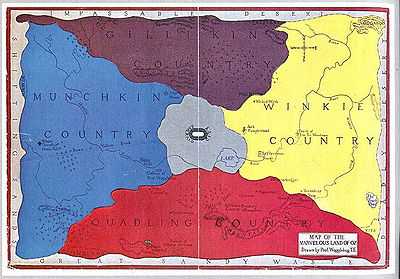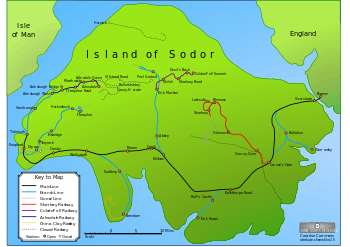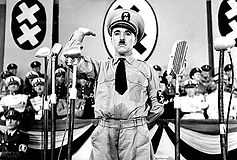Fictional country



A fictional country is a country that is made up for fictional stories, and does not exist in real life, or one that people believe in without proof. Sailors have always mistaken low clouds for land masses, and in later times this was given the name Dutch capes.[1] Other fictional lands appear most commonly as settings or subjects of myth, literature, movies, or video games. They may also be used for technical reasons in actual reality for use in the development of specifications, such as the fictional country of Bookland, which is used to allow EAN "country" codes 978 and 979 to be used for ISBN numbers assigned to books, and code 977 to be assigned for use for ISSN numbers on magazines and other periodicals. Also, the ISO 3166 country code "ZZ" is reserved as a fictional country code, thus no Internet top-level domain will ever end in ".ZZ".
Fictional countries appear commonly in stories of early science fiction (or scientific romance). Such countries supposedly form part of the normal Earth landscape although not located in a normal atlas. Later similar tales often took place on fictional planets.
Jonathan Swift's protagonist, Lemuel Gulliver, visited various strange places. Edgar Rice Burroughs placed adventures of Tarzan in areas in Africa that, at the time, remained mostly unknown to the West and to the East. Isolated islands with strange creatures and/or customs enjoyed great popularity in these authors' times. By the 19th century, when Western explorers had surveyed most of the Earth's surface, this option was lost to Western culture. Thereafter fictional utopian and dystopian societies tended to spring up on other planets or in space, whether in human colonies or in alien societies originating elsewhere. Fictional countries can also be used in stories set in a distant future, with other political borders than today.
Superhero and secret agent comics and some thrillers also use fictional countries on Earth as backdrops. Most of these countries exist only for a single story, a TV-series episode or an issue of a comic book. There are notable exceptions, such as Qumar and Equatorial Kundu in The West Wing, Marvel Comics Latveria and DC Comics Qurac and Bialya.
Purposes
Fictional countries often deliberately resemble or even represent some real-world country or present a utopia or dystopia for commentary. Variants of the country's name sometimes make it clear what country they really have in mind. By using a fictional country instead of a real one, authors can exercise greater freedom in creating characters, events, and settings, while at the same time presenting a vaguely familiar locale that readers can recognize. A fictional country leaves the author unburdened by the restraints of a real nation's actual history, politics, and culture, and can thus allow for greater scope in plot construction and be exempt from criticism for vilifying an actual nation, political party or people. The fictional "Tomania" (a parody of Nazi Germany named after ptomaine) serves as a setting for Charlie Chaplin's The Great Dictator and skewers a régime infamous for religious bigotry, militarism, diplomatic bullying, and violations of civil liberties.

Fictional countries are also invented for the purpose of military training scenarios,[2] e.g. the group of islands around Hawaii were assigned the names "Blueland" and "Orangeland" in the international maritime exercise, RIMPAC 98.[3][4]
Regional stereotypes
Writers may create an archetypal fictional "Eastern European", "Middle Eastern", "Asian", "African" or "Latin American" country for the purposes of their story often called a "Foreign Power".
Such countries often embody stereotypes about their regions. For example, inventors of a fictional Eastern European country typically describe it as a former or current Soviet satellite state, or with a suspense story about a royal family; if pre-20th century, it likely resembles Ruritania or feature copious vampires and other supernatural phenomena. A fictional Middle Eastern state often lies somewhere on the Arabian peninsula, and either has substantial oil-wealth and has a sultan, or features a stereotypically Muslim Extremist culture, widespread terrorism and poverty, and a country name ending in -istan. A fictional Latin American country typically projects images of a banana republic beset by constant revolutions, military dictatorships, and coups d'état. A fictional African state suffers from poverty, civil war and disease. A fictional Caribbean nation features voodoo and poverty.
Modern writers usually do not try to pass off their stories as facts. However, in the early 18th century George Psalmanazar passed himself off as a prince from the island of Formosa (present-day Taiwan) and wrote a fictional description about it to convince his sponsors.
Some larcenous entrepreneurs have also invented fictional countries solely for the purpose of defrauding people. In the 1820s, Gregor MacGregor sold land in the invented country of Poyais. In modern times, the Dominion of Melchizedek and the Kingdom of EnenKio have been accused of this. Many varied financial scams can play out under the aegis of a fictional country, including selling passports and travel documents, and setting up fictional banks and companies with the seeming imprimatur of full government backing.
Fictional countries in survey research
Fictional countries have been created for polling purposes. When polled in April 2004, 8% of British people believed that the fictional country of Luvania would soon join the European Union.[5] In the 1989 General Social Survey, U.S. respondents were asked to rate the social status of people of "Wisian" background, a fictional national heritage. While a majority of respondents said they could not place the Wisians in the U.S. social hierarchy, those who did ranked their status as quite low, giving an average of 4.12 on a 9-point scale, where 9 was the highest social standing.[6] "Once you let the Wisians in, the neighborhood goes to pot," quipped Time Magazine.[7]
Questionable cases
Countries from stories, myths, legends, that some people have believed to actually exist.
- Atlantis
- Aztlán
- El Dorado
- Hidalgo
- Lemuria
- Lyonesse
- Mu (continent)
- Ophir (In 1946 an inscribed pottery shard was found at Tell Qasile (in modern-day Tel Aviv) dating to the eighth century BC. It bears, in Paleo-Hebrew script the text "gold of Ophir to/for Beth-Horon [...] 30 shekels" 'The find confirms that Ophir was a place where gold was imported from,' although its location remains unknown.)
- Shangri-La or Shambhala
- Tazonia
- Xanadu
- Zanj
- Transformatia
- Zembla (See Pale Fire)
See also
- Fictional African countries
- Fictional Asian countries
- Fictional city
- Fictional companies
- List of fictional companies
- Fictional geography
- Jennifer Government: NationStates
- List of fictional counties
- List of fictional countries
- List of fictional European countries
- List of fictional planets
- List of fictional U.S. states
- List of fictional universes
- Proposed country
- Worldbuilding
Books
- Alberto Manguel & Gianni Guadalupi: The Dictionary of Imaginary Places, ISBN 0-15-626054-9
- Brian Stableford: The Dictionary of Science Fiction Places. Simon & Schuster, 1999. ISBN 978-0684849584
References
- ↑ Schott's Quintessential Miscellany, p.119, ISBN 978-1-4088-1577-9
- ↑ "Navy News - News Desk - News - HMS Edinburgh works out in the Pacific". www.navynews.co.uk. Retrieved 2008-12-14.
- ↑ "RIMPAC simulates conflict between divided countries - Asian Political News". findarticles.com. 1998-08-03. Retrieved 2008-12-14.
- ↑ "Rim of the Pacific Exercise (RIMPAC)". www.globalsecurity.org. Retrieved 2008-12-14.
- ↑ Haines, Lester (2004-04-29). "Brits welcome Luvania to EU". The Register.
- ↑ "Bias Thrives In a Vacuum". New York Times. January 8, 1992.
- ↑ "American Notes: Ethnicity". Time. January 20, 1992.
| Fictional countries |
| General list | Africa | Americas | Asia | Europe | Islands | Other |
| ||||||||||||||||||||||||||||||||||||||||||||||
| ||||||||||||||||||